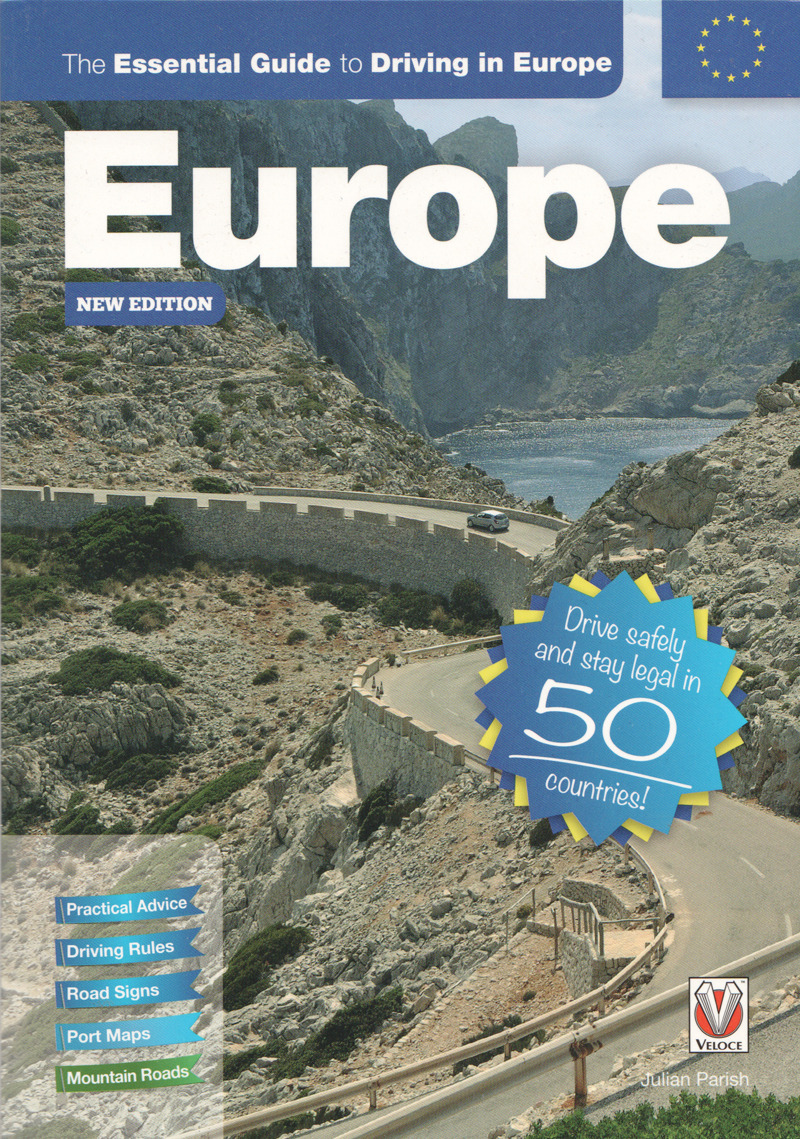|
||||||||||||||||||||||
 |
||||||||||||||||||||||||||||||||
|
The
review copy of this revised and updated book arrived the day
after it
was confirmed that the speed limit on non-dual carriageways and
motorways in France was going to be reduced from 90 to 80 km/hr.
“Let’s
see how up to date this book is” I thought as I turned to the
France
pages and lo and behold, there it was.
Back in the late fifties and early sixties, my parents were
more
adventurous than most and we frequently ventured across the
Channel in
his Citroën DS for our family holidays and visited places like
Yugoslavia and Spain and Czechoslovakia. Back in those
days, a
number of rituals took place prior to such adventures – the
fitting of
yellow bulbs and altering the dip of the headlights, mounting a
GB
sticker and of course, purchasing RAC Continental breakdown
cover. The RAC used to issue a useful guide to driving
abroad and
they included a windscreen sticker that showed those funny
European
road signs and provided a mph : km/h convertor. We also
used to
purchase an itinerary from them, which I would carefully plot
onto the
road maps. Also included was a booklet explaining the
rules of
the road in Europe. I would read these rules and
advise my
Father whenever he broke them or seemed unaware of them. |
||||||||||||||||||||||||||||||||
 |
||||||||||||||||||||||||||||||||
|
I consider myself to
be a seasoned traveller, having frequently driven in France,
Spain,
Belgium, the Netherlands, Germany, Austria, Switzerland, Italy,
and
other countries so I approached this book in a somewhat blasé
manner. I
started out by looking at the sections covering countries with
which I
am familiar. The book provides comprehensive coverage for
50
European countries and includes speed limits, local rules,
motorway
tolls, road signs, winter driving, drink/driving rules, mountain
passes
and port maps. I turned to the United Kingdom section since this is where I
do the
majority of my driving and was amused by the suggestion that
British
motorists have “…a reputation for being courteous”.
Leaving that
aside, I was surprised that there was no mention of the
atrocious state
of some of our roads especially since this is covered in
relation to
other countries. I was also surprised that our notoriously
poor
lane discipline, the prevalence of tailgating and the use of
average
speed cameras are not mentioned. The UK section is
primarily
intended for use by people from outside the country, many of
whom seem
to fear driving on the left. So, a slightly inauspicious start which was compounded by the fact that I had to turn to the Index rather than the Contents to find the United Kingdom pages. The Contents is split into Western Europe, Southern Europe, Northern Europe and Central & Eastern Europe rather than just listing the countries in alphabetical order. I then looked up France (in the Index)
and thought this was much
better
than the United Kingdom section with no obvious omissions and
lots of
useful, practical tips. The same holds true for Belgium
(where
poor driving standards and the ruinous state of the roads get a
mention); the Netherlands, Germany, Spain, Italy, Switzerland
and the
Czech Republic. |
||||||||||||||||||||||||||||||||
 |
||||||||||||||||||||||||||||||||
|
Then there are
the illustrations which seem to me to be often irrelevant to the
accompanying text and too small to be of much use – an example
of the
latter being a picture of a road in Mons where the picture is
too dark
and too small to be able to confirm that it is indeed surfaced
with
cobblestones. Examples of the former include pictures of a
Dutch
ambulance, traffic police in Madrid and some lovely scenic views
of
mountain passes. I must admit that I would rather that the
space
used for these images be used for additional, country-specific
road
signs – especially where they use words rather than graphics. |
||||||||||||||||||||||||||||||||
|
A lifelong motoring enthusiast, Julian Parish has lived in both the UK and France, and has driven more than half a million miles throughout Europe and North America. After a career in book and software publishing, he now spends much of his time writing and translating motoring books and articles, many of them devoted to the pleasures of driving on the Continent. He has been a member of the Institute of Advanced Motorists in the UK for nearly thirty years, is a member of AFPA, the association of French motoring journalists, and speaks French and German fluently. |
||||||||||||||||||||||||||||||||
|
© 2016 and 2018 Julian Marsh |
|
|||||||||||||||||||||||||||||||


